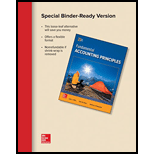
Asset:
An asset means a possession of property tangible or intangible which has some value; such that it can be realized in monetary terms and such asset can be liquidated in short-term or long-term approach so as to derive its value in cash.
Current Assets:
A current asset can be as the asset of any entity that is in the form of cash, cash equivalent or in a form which can be converted into cash within a year. Generally, the current are defined to be the ones which can be liquidated within a year but if the company's operating cycle exceeds one year even though the assets are regarded as current assets until they get converted into cash ultimately as the last stage of operating cycle.
Long-Term Assets:
Long-term assets are the assets possessed by the company which cannot be liquidated before one year. The minimum maturity period for the said assets is one year. These assets are being recorded in the books at the purchase price and are adjusted by the
To determine: The reason of cost of lump-sum purchase being allocated to the individual assets acquired.
Want to see the full answer?
Check out a sample textbook solution
Chapter 10 Solutions
Loose Leaf for Fundamental Accounting Principles
- The total assets of a company amount to $845,000, while the total liabilities are $315,000.arrow_forwardSuppose that Dawson Manufacturing has annual sales of $5.83 million, cost of goods sold of $2,450,000, average inventories of $1,225,000, and average accounts receivable of $890,000. Assume that all of Dawson's sales are on credit. What will be the firm's operating cycle? (Use 365 days a year. Do not round intermediate calculations. Round your final answer to 2 decimal places.)arrow_forwardI need help with this financial accounting question using accurate methods and procedures.arrow_forward
- Taiga Tools manufactures camping equipment. In 2023, fixed overhead was applied to products at the rate of $12 per unit. Variable cost per unit remained constant throughout the year. In August 2023, income under variable costing was $278,000. August's beginning and ending inventories were 24,600 and 16,200 units, respectively. a. Calculate income under absorption costing assuming no variances. b. Assume instead that the company's August beginning and ending inventories were 14,500 and 19,800 units, respectively. Calculate income under absorption costing. Provide answerarrow_forwardCalculate the gross profit percentage.arrow_forwardWhat is the gross profit?arrow_forward
- Tidal Industries had a beginning finished goods inventory of $27,800 and an ending finished goods inventory of $25,200 during FY 2024. Beginning work-in-process was $22,300 and ending work-in-process was $20,500. Factory overhead was $32,400. The total manufacturing costs amounted to $315,600. Use this information to determine the FY 2024 Cost of Goods Sold.arrow_forwardWhat is the gross profit margin?arrow_forwardNonearrow_forward

 AccountingAccountingISBN:9781337272094Author:WARREN, Carl S., Reeve, James M., Duchac, Jonathan E.Publisher:Cengage Learning,
AccountingAccountingISBN:9781337272094Author:WARREN, Carl S., Reeve, James M., Duchac, Jonathan E.Publisher:Cengage Learning, Accounting Information SystemsAccountingISBN:9781337619202Author:Hall, James A.Publisher:Cengage Learning,
Accounting Information SystemsAccountingISBN:9781337619202Author:Hall, James A.Publisher:Cengage Learning, Horngren's Cost Accounting: A Managerial Emphasis...AccountingISBN:9780134475585Author:Srikant M. Datar, Madhav V. RajanPublisher:PEARSON
Horngren's Cost Accounting: A Managerial Emphasis...AccountingISBN:9780134475585Author:Srikant M. Datar, Madhav V. RajanPublisher:PEARSON Intermediate AccountingAccountingISBN:9781259722660Author:J. David Spiceland, Mark W. Nelson, Wayne M ThomasPublisher:McGraw-Hill Education
Intermediate AccountingAccountingISBN:9781259722660Author:J. David Spiceland, Mark W. Nelson, Wayne M ThomasPublisher:McGraw-Hill Education Financial and Managerial AccountingAccountingISBN:9781259726705Author:John J Wild, Ken W. Shaw, Barbara Chiappetta Fundamental Accounting PrinciplesPublisher:McGraw-Hill Education
Financial and Managerial AccountingAccountingISBN:9781259726705Author:John J Wild, Ken W. Shaw, Barbara Chiappetta Fundamental Accounting PrinciplesPublisher:McGraw-Hill Education





